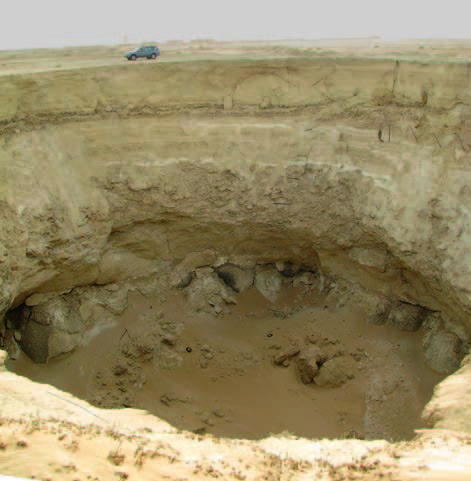Layla Lakes, Saudi Arabia: The World-Wide Largest Lacustrine Gypsum Tufas
DOI:
https://doi.org/10.3986/ac.v37i1.156Abstract
Throughout the center of Saudi Arabia the anhydrite upper Jurassic Heethformation can be followed N to S. Locally it is punctured by hypogene karst sinkholes. The most prominent are the former Layla Lakes at 22.17°N 46.70°E. The lakes (17 originally) have been drained in the late 1980’s, revealing 19 sinkholes, some of them composites of several subsidence centers. The largest is 1.1 km long, 0.4 km wide and about 40 m deep. Others are less than 10 m across and rather recent. The bottom of the former lakes and the flats around them are composed of thick layers of fine-grained lake chalks. The most striking feature of these sinkholes is the several meters thick tufa covering the vertical walls of the sinkholes. It formed sub-aqueous and is entirely composed of gypsum. Morphologically the tufa displays thick bulbous forms at the bottom changing to conical forms at middle depthto gour-, gutter-, or shovel-like forms near to the former lake surface. The mineralogy and morphology of this tufa appear to be singular world-wide.Downloads
Download data is not yet available.

Downloads
Published
2008-06-01
How to Cite
Kempe, S., & Driks, H. (2008). Layla Lakes, Saudi Arabia: The World-Wide Largest Lacustrine Gypsum Tufas. Acta Carsologica, 37(1). https://doi.org/10.3986/ac.v37i1.156
Issue
Section
Original papers
License
Authors guarantee that the work is their own original creation and does not infringe any statutory or common-law copyright or any proprietary right of any third party. In case of claims by third parties, authors commit their self to defend the interests of the publisher, and shall cover any potential costs.
More in: Submission chapter




